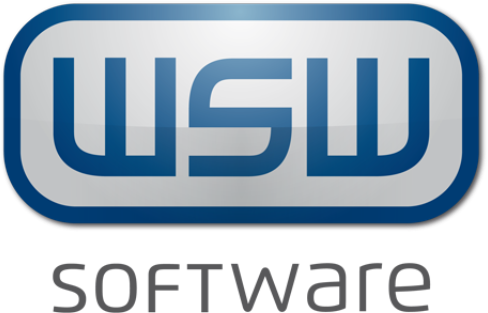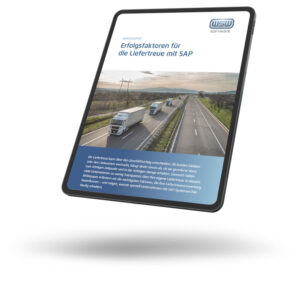In trade, in logistics companies, but also in production, it must be ensured that goods or materials are always available in sufficient quantities. Replenishment must therefore be provided again and again to ensure that there is enough stock on hand. But what exactly is "enough"? And how do you prevent having too much material in stock? Replenishment control provides the most accurate and efficient answer to these questions.
Goals of the automated replenishment control
With the help of automated replenishment control, a high availability of preliminary products and materials is to be ensured. The aim is to:
- Minimum stock levels not fallen short of
- Shortages avoided
- the material flow is not interrupted
- and customer needs are met quickly and efficiently
The different replenishment strategies
A distinction is made between three different replenishment variants:
- At manual replenishment the shortfall is detected during picking and the required demand is then determined and organized
- At precautionary replenishment Replenishment is triggered automatically when the stock level falls below a defined minimum/threshold value, even without a specific requirement
- The Replenishment of requirements is based on demand: replenishment is only triggered when stock is no longer sufficient for orders
Depending on why the replenishment is triggered, one can also distinguish three procedures:
- Provisioning procedure: The decisive factor here is the consumption
- Reorder point procedure: Replenishment is triggered when a certain stock level is reached
- Cycle time method: Replenishment is dependent on a time cycle (rhythmic planning procedure)
A third criterion is the replenishment quantity:
- Minimum replenishment quantity
- Optimum replenishment quantity
- Replenishment quantity to a target stock
- Maximum stock
The different variants and processes result in numerous possibilities for a possible replenishment strategy. In many cases, the determination of such a strategy does not take place for the entire company, but is based on assemblies, product groups or even individual parts.
Replenishment control in production
Ideally, a manufacturing company always procures just enough input products from its suppliers to be able to fulfill its own customer orders with production running at maximum capacity. In addition, current developments such as individualized single orders (batch size 1), extreme fluctuations in demand or short product cycles place high demands on the material flow and thus also on replenishment control. Complex processes that manually trigger reordering to replenish stocks quickly reach their limits. Replenishment control must therefore be as automated as possible.
Especially in the automotive industry, which works with a very tight cycle of production, the requirements for replenishment control are particularly complex. Special forms of automated replenishment control are therefore frequently encountered and are explained below.
Special case VMI: What is automated replenishment control based on the vendor managed inventory principle?
Replenishment management based on the Vendor Managed Inventory (VMI) principle is a logistics concept that can comprehensively improve and optimize the performance of the supply chain. The corresponding supplier manages the stocks of its articles at the customer's site itself and independently takes care of replenishment deliveries depending on the customer's stock levels and requirements.
When a replenishment delivery is made depends on what has been agreed between the supplier and the customer. Essentially, there are three variants.
Variant 1: Classic VMI
In classic VMI, the supplier plans replenishment deliveries depending on the sales and consumption data provided by the customer. To make this possible, the supplier has access to the current inventory of the customer's warehouse.
Variant 2: Continuous replenishment
In the case of continuous supply, the supplier checks the stock on hand during visits to the customer and then determines the scope of the next replenishment delivery. Since a certain minimum stock should be kept in order to avoid interruptions in downstream production processes, this is also referred to as "replenishment as a precaution".
Variant 3: Consignment warehouse
An extension of the VMI approach is the establishment or use of a consignment warehouse near or directly at the supplier's customer. The special feature of this approach is that the items held in the consignment warehouse remain in the supplier's possession until they are removed by the customer.
For the customer, a consignment warehouse offers various advantages such as:
- The storage costs are minimized
- Liquidity is conserved, as less capital is tied up in the portfolio
- Delivery times can be shortened
- A high level of service is promoted
- Responsiveness is increased because input materials are already on site when needed
The supplier also benefits from the customized supply service because it can actively influence the customer's inventories and effectively promotes long-term customer loyalty through the associated reliability. The supply of goods from the consignment warehouse in the form of administration or replenishment scheduling is carried out either by the supplier itself or by an external service provider.
In order to map the VMI process on the IT side, it is often necessary to extend the standard software used. In the SAP environment, for example, the solution SPEEDI VMI which allows all steps of efficient replenishment management to be transparently tracked, monitored and controlled by the customer and supplier.
The involvement of external service agents (ESA)
Another option is to involve an external service agent (ESA) who takes care of the consignment warehouse near the customer or on the customer's premises. In this case, the ESA is usually a legally independent company that takes over services for supplier companies. The external service provider maintains current stock levels, which are taken over by the supplier and the customer. The external service agent is able to keep track of minimum stocks in the consignment warehouse and is capable of building them up.
The use of an external service agent has advantages for the supplier as well as for the customer because high storage costs and storage space can be minimized by merging the different warehouses.
Here, too, it is essential that the replenishment process can be mapped automatically in a software solution to ensure transparency between all three parties involved. There are therefore specific applications for the suppliers, for example, the SAP-based solution SPEEDI EDL.
Third-party processing
Third-party processing refers to the process when suppliers outsource certain orders or individual deliveries to external third-party suppliers. These suppliers deliver goods from their own production directly to the customer or to the consignment warehouse in the customer's vicinity.
The area of third-party order processing is very diverse and can vary greatly. At this point, automation through a software solution is an efficient relief for suppliers who have SAP ERP software in use and want to map these processes there.
However, standard systems such as SAP ERP reach their limits when it comes to such complex processes. But even Third-party processes that are not met by the SAP standard can be mapped and controlled in SAP-supported software. This can save extra manual effort and the associated time.



